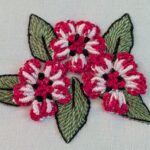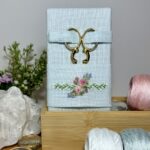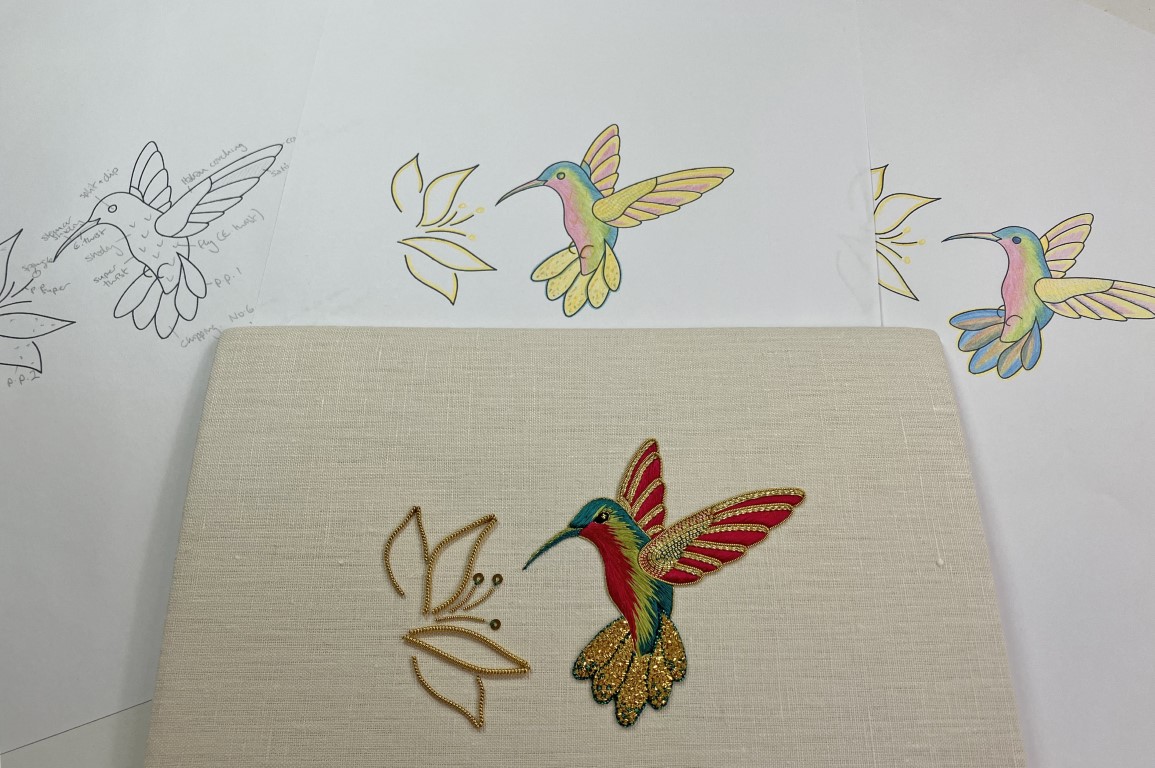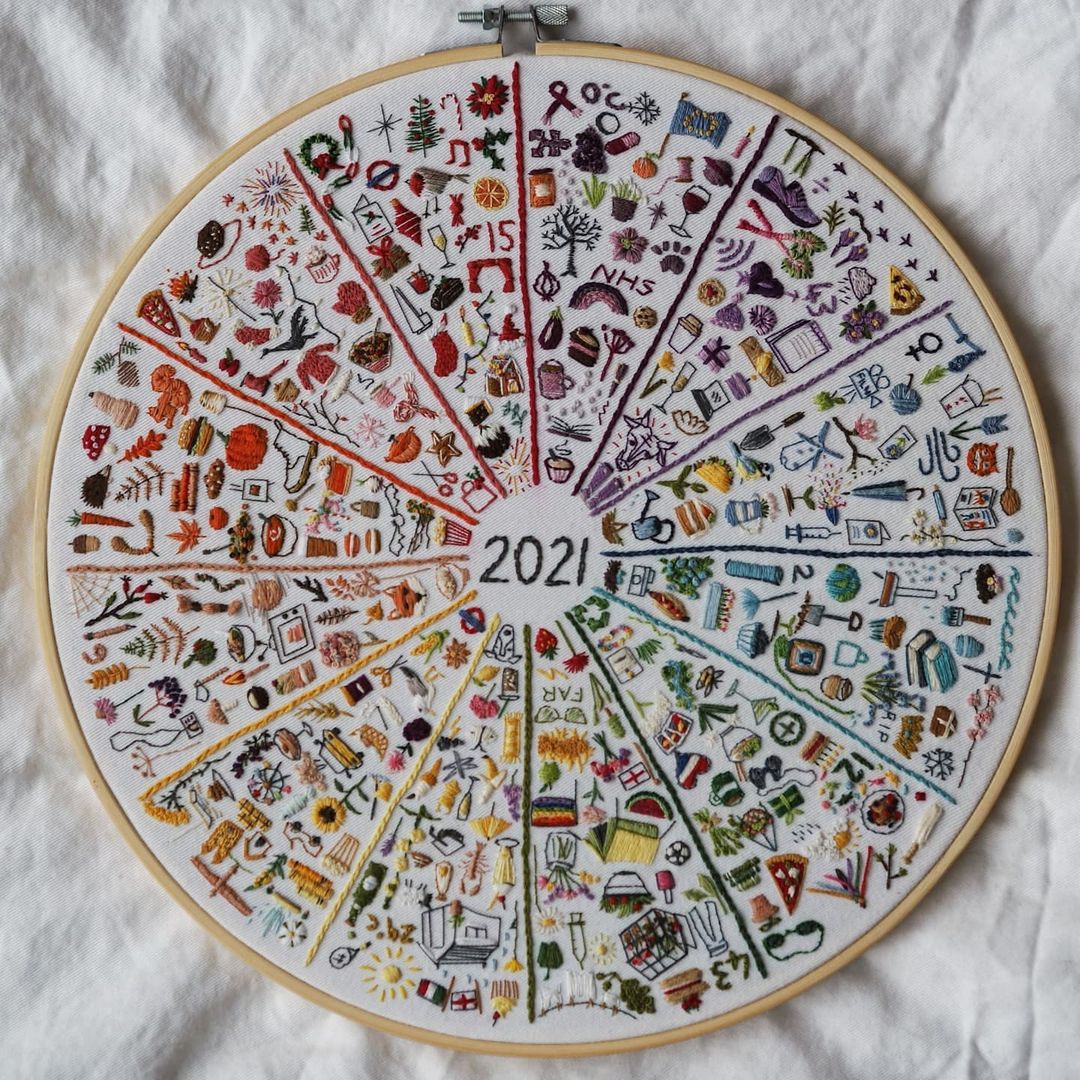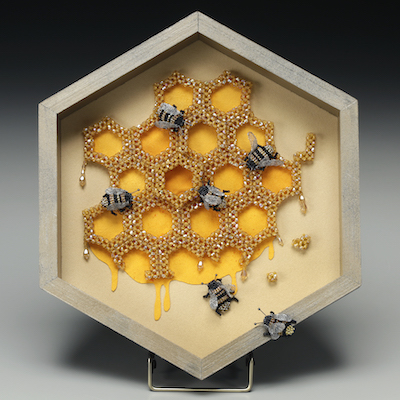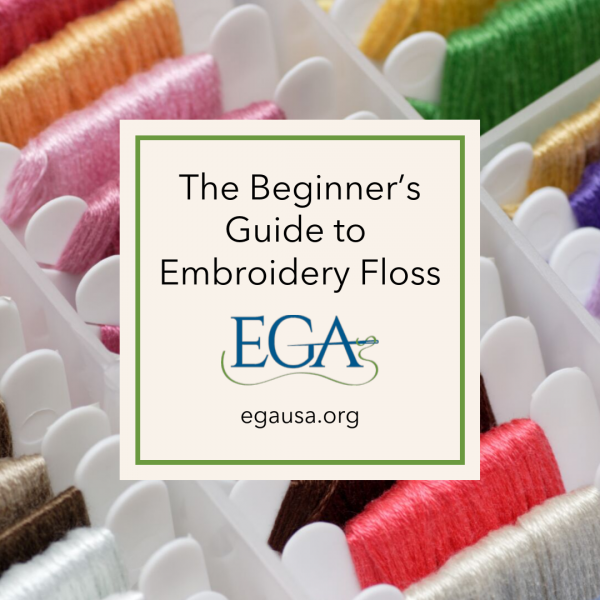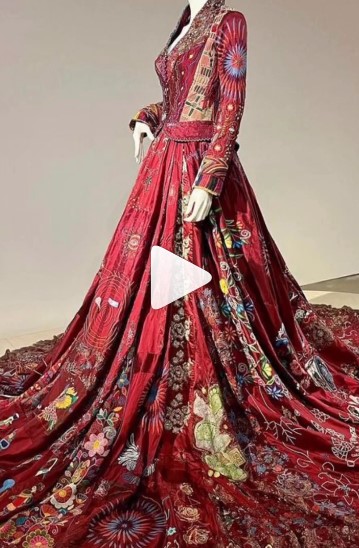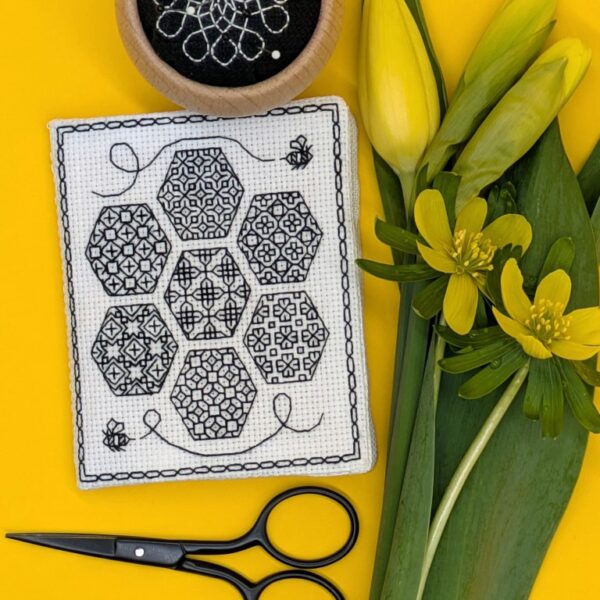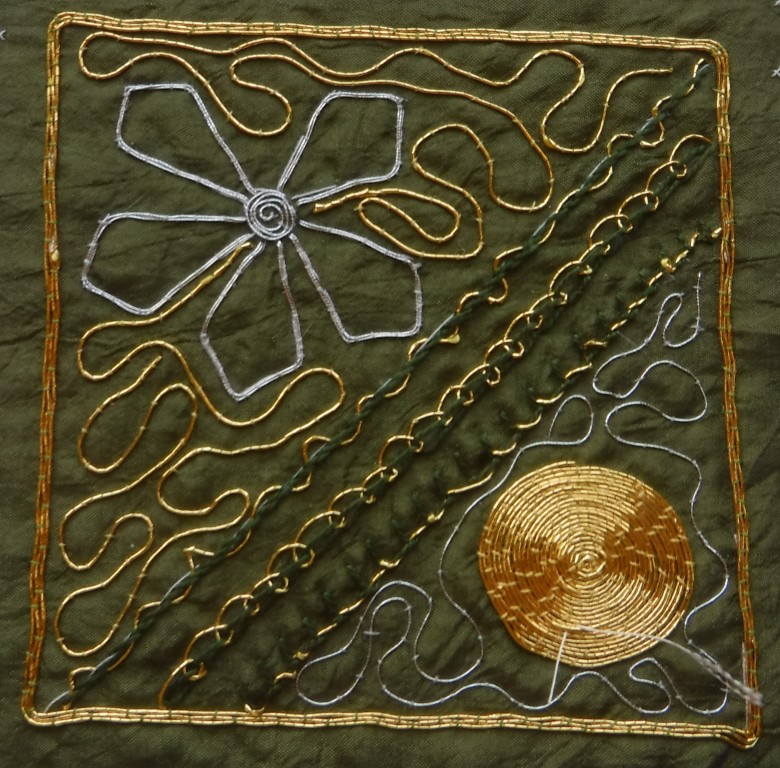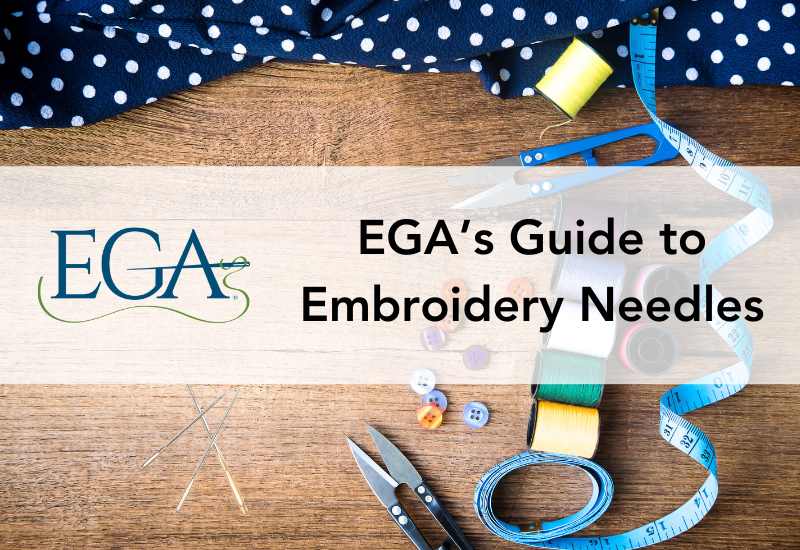
Having the right embroidery needle is an essential factor for a successful embroidery project. There are almost as many types of needle as there are types of embroidery. Choosing the wrong needle for your desired project and fabric type can lead to snagged thread and ruined fabrics, so don’t overlook the importance of your embroidery needle. Pay special attention to needle sizes as well. In many cases, the smaller the needle number, the larger the needle size!
In this post, we’ll explore the different types of embroidery needles and highlight the fabrics, threads, and techniques each needle is best suited for. We’ve also included several hand sewing and quilting needles on our list as we know many needleworkers enjoy quilting and hand sewing alongside needlework!
Crewel Needles / Standard Embroidery Needles
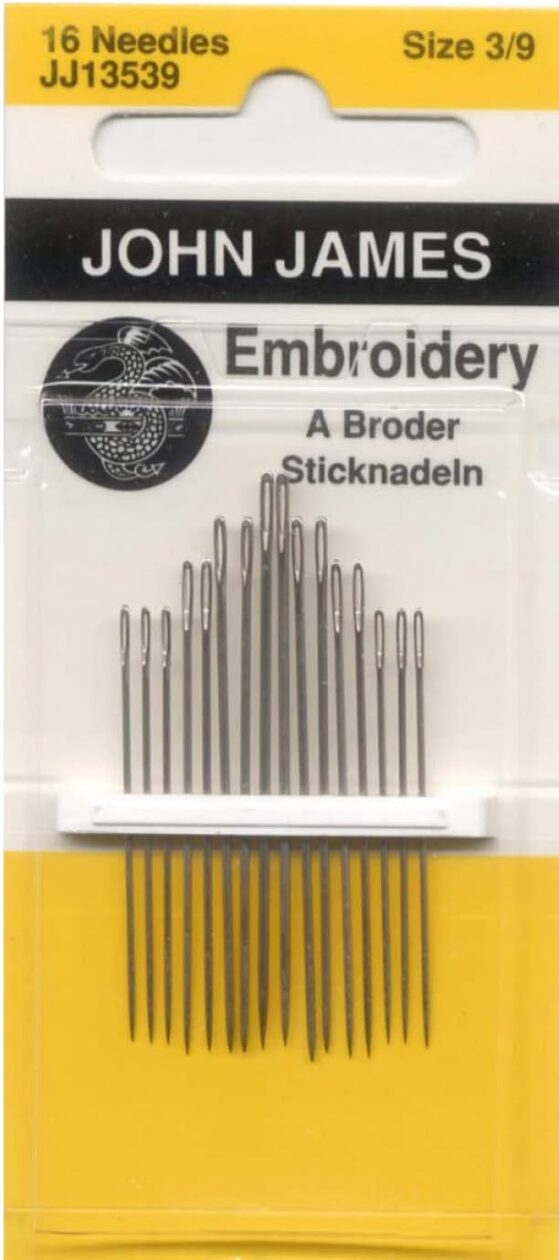
Defining Characteristics:
- Size: Typically found in sizes 1 to 12 (the smaller the number, the larger the needle).
- Shape: Medium-length with a sharp point, a medium-size eye, and usually a thinner shaft.
- Material: Usually nickel-plated steel, also gold-plated.
Uses:
The most common needle used for embroidery, crewel needles are also the most versatile type of embroidery needle. A great option for beginners, crewel or embroidery needles are used for surface embroidery, such as crewel work (hence the name). Their sharp tip allows them to pierce through tightly woven fabrics like cotton, linen, and even silk. The medium-size eye can accomodate a variety of threads, including cotton floss, silk, and wool.
Perfect For:
Surface embroidery, fine detail work, and general hand embroidery. If you’re just starting out and unsure which needle to buy, a crewel needle is the safest bet.
Tapestry Needles
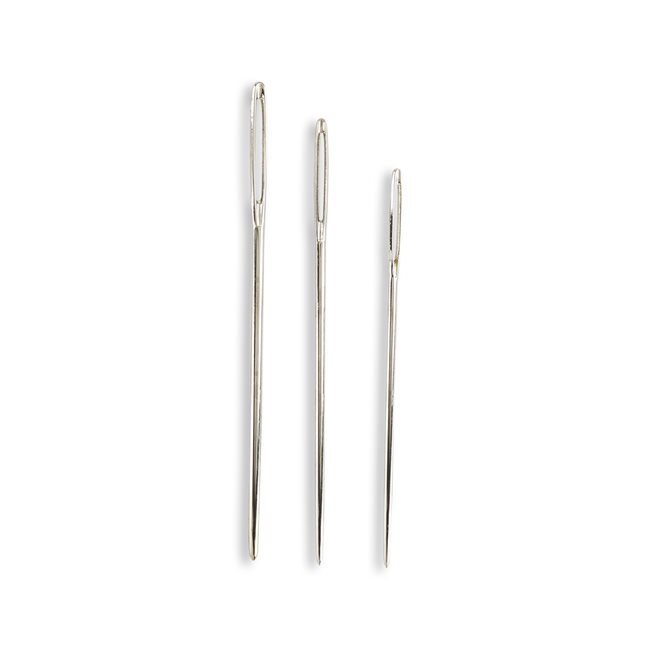
Defining Characteristics:
- Size: Available in sizes 13 to 28 (13 is largest, 28 is smallest).
- Shape: Large eye, blunt tip.
- Material: Steel or nickel-plated steel for smooth use.
Uses:
Tapestry needles are specifically designed for counted-thread embroidery, such as cross-stitch, needlepoint, and blackwork. Their blunt tips allow them to pass easily between the open holes of Aida cloth, evenweave, or canvas without splitting the fabric. The large eye easily accommodates thicker threads, such as 6-stranded cotton or tapestry wool.
Perfect For:
Tapestry needles are great for cross-stitch projects or any form of needlepoint or counted-thread work like Hardanger, and pulled and drawn thread work. They are also essential when whipping embroidery stitches, as the blunt tip allows needleworkers to pass under stitches without snagging on the foundation stitches.
Chenille Needles
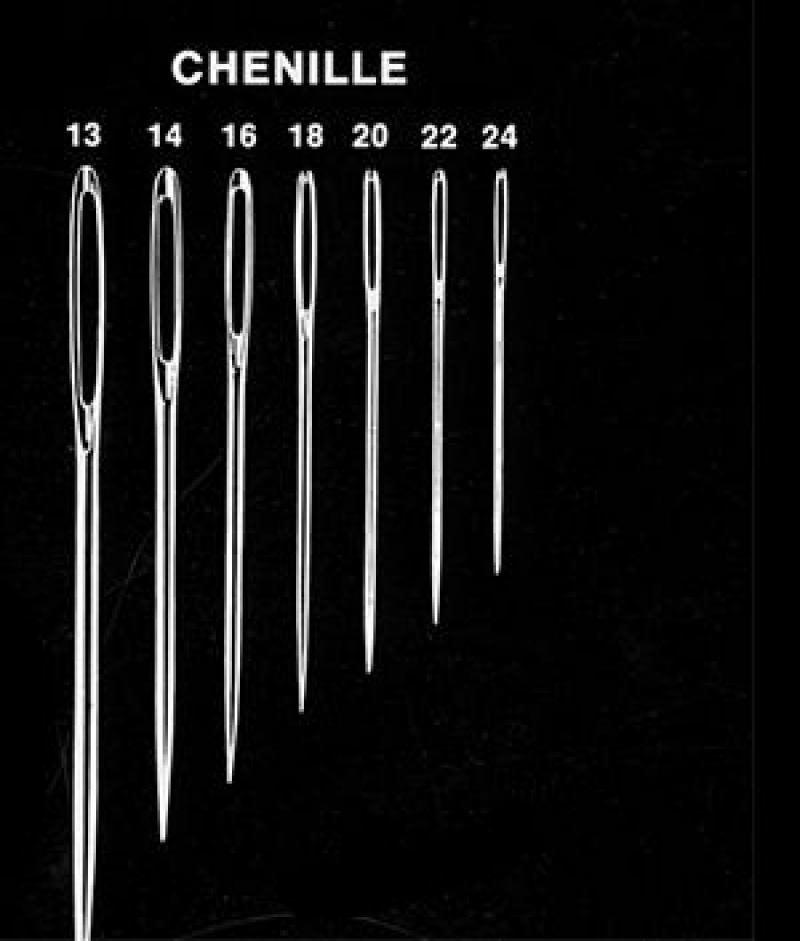
Defining Characteristics:
- Size: Common sizes range from 13 to 28 (like tapestry needles).
- Shape: Sharp point with a thin shaft and large, long eye.
- Material: Typically steel or nickel-plated.
Uses:
Similar to a tapestry needle, chenille needles have a large eye. Unlike a tapestry needle, chenille needles have a sharp point that allows them to pierce thick fabrics like wool, felt, denim, or closely woven cloth or canvas. Their long eye makes them suitable for thick and multi-stranded threads and ribbons.
Perfect For:
Chenille needles are a favorite for crewel embroidery, chenille embroidery, silk ribbon embroidery, and projects that involve piercing through heavier fabrics with bulkier threads. They’re also useful for more expressive, textured designs.
Milliner (Straw) Needles
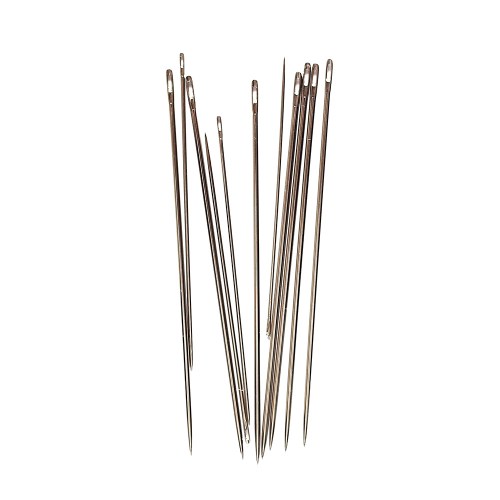
Defining Characteristics:
- Size: Ranges from sizes 1 to 10; also 15 and 18. (1 is largest, 10 is smallest)
- Shape: Long, slender, with a sharp point and small, round eye of same thickness as shaft.
- Material: Steel.
Uses:
Traditionally used in hat and bonnet making (hence the name!), milliner needles are especially suited for creating wrapped stitches, such as bullion knots, French knots, and cast-on stitches. They are also useful for beading, as the width of the needle remains the same from eye to tip. Their longer length and slim profile makes it easier to wrap the thread multiple times around the needle, and the small, round eye ensures the needle pulls through the fabric smoothly. Milliner needles work best with medium to fine threads like cotton floss or silk, and they’re suited for fabrics like cotton, linen, or lightweight wool.
Perfect For:
Projects that involve decorative knot work, textured stitching, and beadwork.
Beading Needles

Defining Characteristics:
- Size: Typically sizes 10 to 15.
- Shape: Long, thin, and flexible with a tiny eye and sharp point.
- Material: Steel.
Uses:
Beading needles are long, thin, flexible, and sometimes curved, making them suitable for incorporating beads into embroidery work. Their thin and flexible design allows them to pass through the small holes of beads without breaking them. These needles are commonly used in tambour embroidery and any technique that involves attaching beads or sequins to fabric. They work well with fine threads like nylon or polyester.
Perfect For:
Projects that incorporate beads, sequins, or other embellishments. Beading needles are especially handy when working on delicate fabrics like silk or organza.
Sharps

Defining Characteristics:
- Size: Range of sizes 1 to 18.
- Shape: Short to medium-length, fine, with a sharp point and a small, round eye.
- Material: Usually made from steel or nickel-plated steel.
Uses:
Sharps needles are more often used in hand sewing, but can be used in certain embroidery techniques, like appliqué. perfect for general-purpose hand sewing and basic embroidery. They have a fine, sharp tip, which makes them excellent for piercing through tightly woven fabrics such as cotton, silk, or polyester. Their small, round eye is ideal for finer threads, such as cotton floss, silk, or fine polyester thread. Due to their shorter length, they provide greater control when hand sewing with precise, detailed stitches like running stitch, whipstitch, and tiny decorative motifs.
Perfect For:
Sharps needles are great for small, detailed embroidery projects or hand-sewing tasks that require precision. They’re commonly used in hemming, hand-sewn repairs, and adding fine decorative stitching on garments or home textiles.
Quilting / Betweens
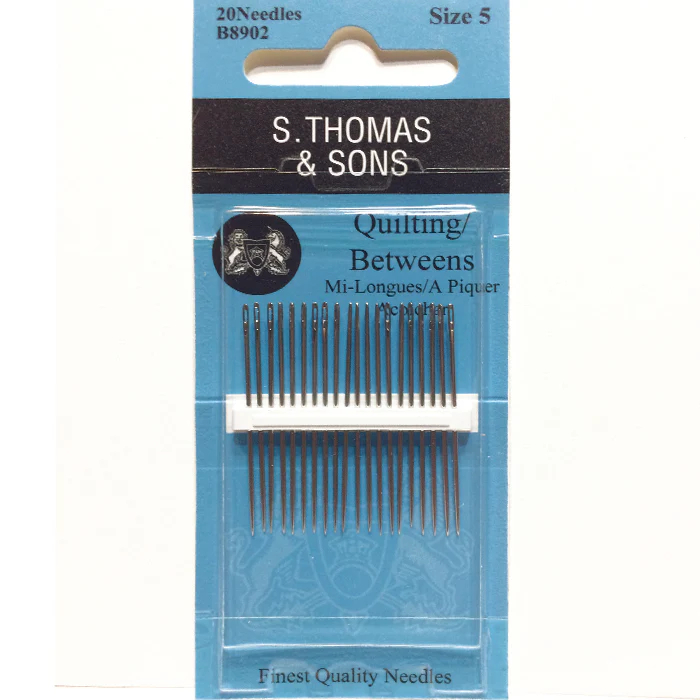
Defining Characteristics:
- Size: Available in sizes 1 to 12.
- Shape: Short and fine with a small, round eye and a sharp tip.
- Material: Commonly made from steel or nickel-plated steel.
Uses:
Designed for quilters, Quilting needles or “Betweens” are similar to Sharps, but shorter in length. Betweens are useful for quilting and hand piecing projects as their shorter length allows quilters to create small, even stitches more quickly, and with better control. The sharp point also enables quilters to easily pierce through multiple layers of fabric with ease. The small, round eye is best suited for finer quilting threads like cotton, polyester, or silk.
Perfect For:
These needles are ideal for hand quilting, particularly when stitching through layers of fabric and batting. Quilting needles are also useful for tailoring and making tiny, accurate stitches in dense fabrics.
Darners and Long Darners
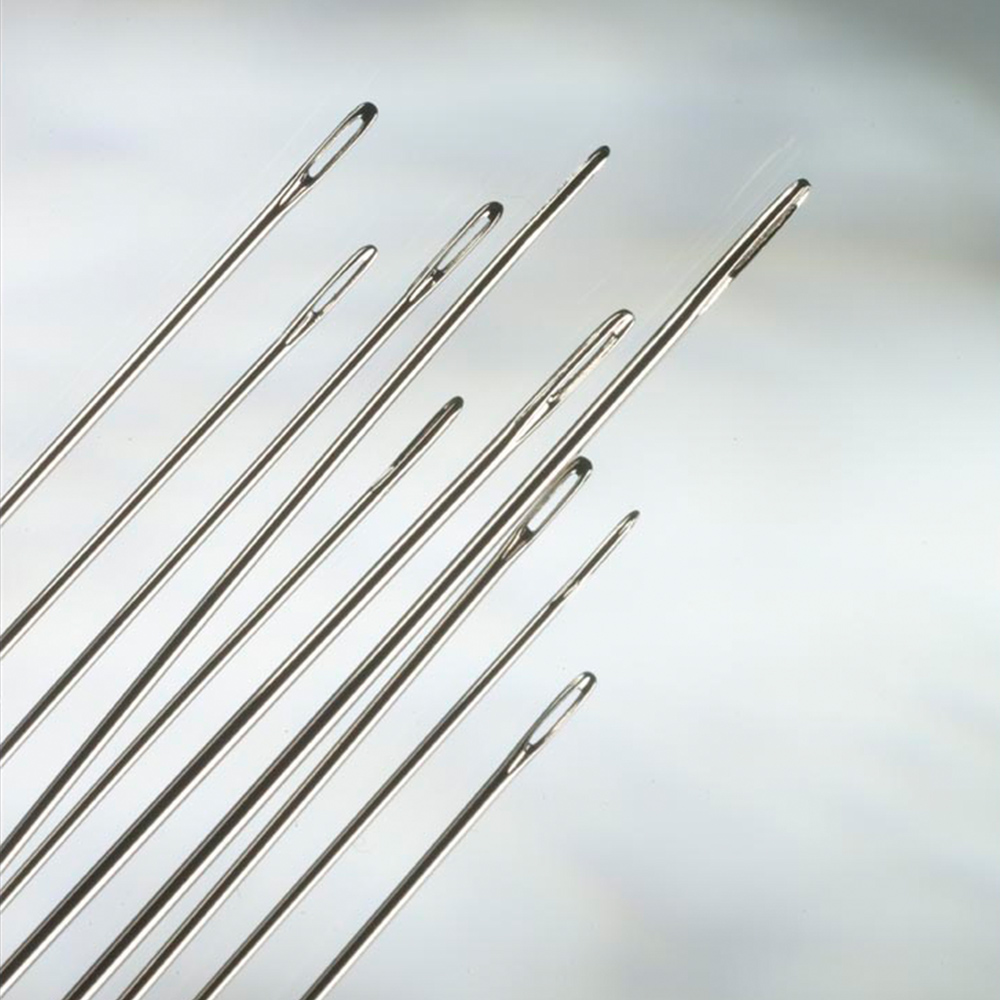
Defining Characteristics:
- Size: Available in sizes 1 to 9 for regular darners and 14 to 18 for long darners (also known as Sailmaker or Glovers needles).
- Shape: Long with a large eye and a sharp point.
- Material: Made from steel or nickel-plated steel for durability and smooth threading.
Uses:
As their name suggests, darners needles are traditionally used for darning and mending. Their long length makes them ideal for running stitches and gathering. The long eye can accommodate thicker threads like yarn, embroidery floss, or cotton, which are often used in mending thicker fabrics such as denim, wool, and canvas. Long darners (also called sailmakers or glovers needles) are specifically suited for heavier fabrics and leather.
Perfect For:
Darners needles are perfect for mending and repair work on clothing, particularly when repairing socks, jeans, or other high-traffic fabric prone to wearing down. They’re also excellent for basting, smocking, and creating long, straight stitches in quilting and hand-sewing projects.
Choosing the right needle is crucial for achieving beautiful, smooth stitches in your embroidery. Each needle is designed for specific fabrics, threads, and techniques, so understanding the differences will help embroiderers make informed choices—and stitch beautiful projects. Whether you’re a beginner learning basic embroidery stitches or an experienced needleworker with the goal of stitching intricate designs, having the correct needle can make all the difference.
